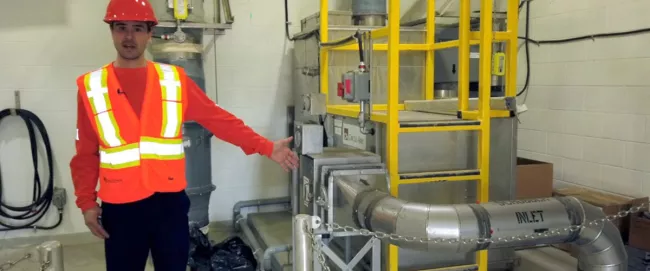What happens after you flush?
When you flush a toilet or drain a bathtub, do you know where that water goes next? Sanitary sewers collect the wastewater that leaves homes and buildings through a drain and move it to a York Region wastewater treatment plant. Then the wastewater is treated to remove contaminants before it’s released into Lake Ontario. But sometimes, wastewater needs an extra boost to keep flowing through this process.
That’s where the City of Vaughan’s pumping stations come in!
Pumping stations are facilities that use pressurized force to push wastewater so it can continue its journey toward the treatment plant. City staff operate and maintain 11 pumping stations across Vaughan to keep wastewater flowing by:
- completing regular inspections and seasonal wet well cleaning.
- using a robust Supervisory Control and Data Acquisition system for real-time station monitoring 24 hours a day, seven days a week.
- facilitating repairs to ensure the facilities and equipment are reliable, function as designed and remain safe for staff to operate.
Want to see what a pumping station looks like? Watch this video on the City’s YouTube channel for an inside look!
To keep the wastewater flowing, it’s important everyday items, such as hygiene products, wipes, fats, oils, grease and garbage, do not get flushed or poured down sinks or drains. The sanitary sewer system is not designed to dispose of anything beyond human waste, toilet paper and wastewater. Flushing any other materials down the drains at home can cause damage or plumbing blockages and increase operation and maintenance costs to clean and repair the sewer pipes or fix equipment at the pumping stations.
To learn more about the City’s wastewater services, visit vaughan.ca/wastewater.
For the latest updates, subscribe to Vaughan News and follow the official corporate channels on Twitter, Facebook, Instagram and LinkedIn.

